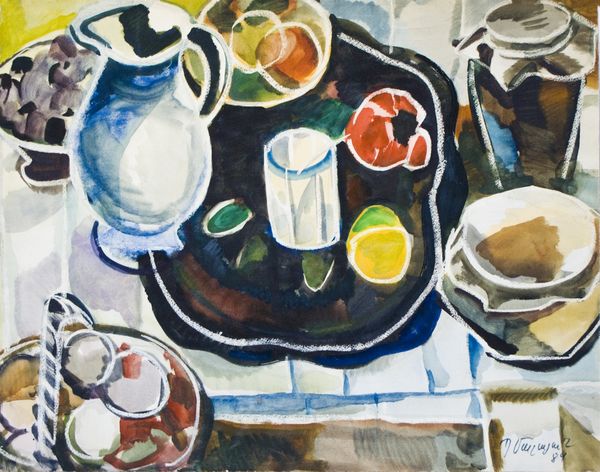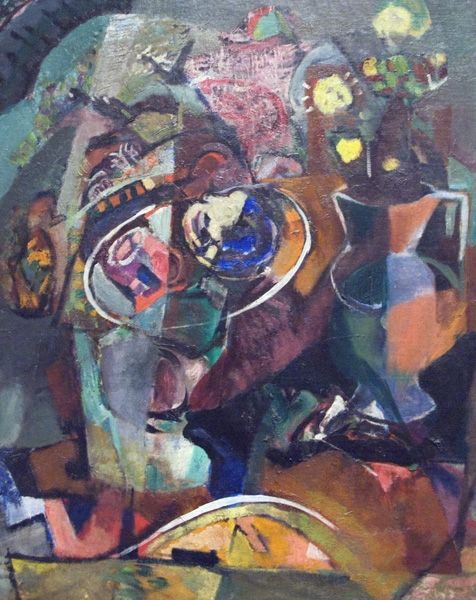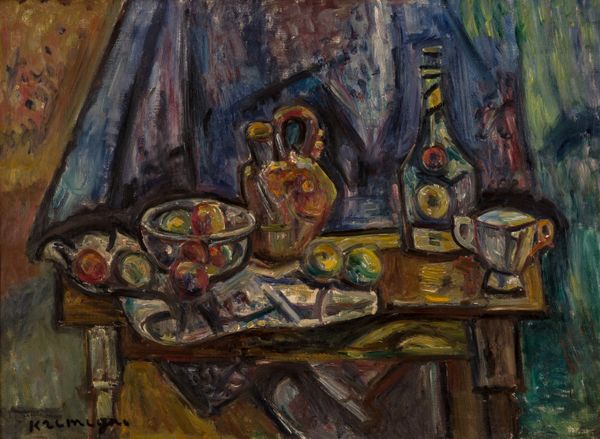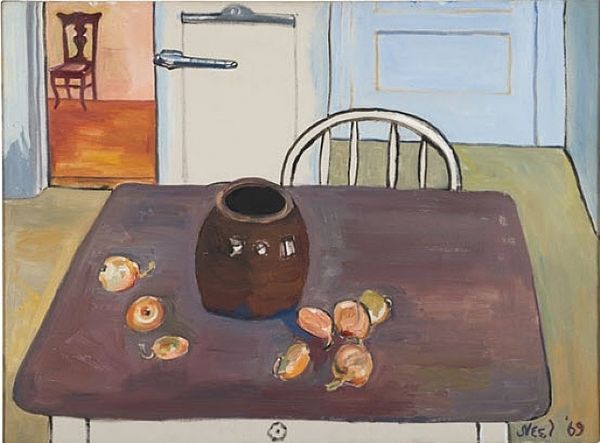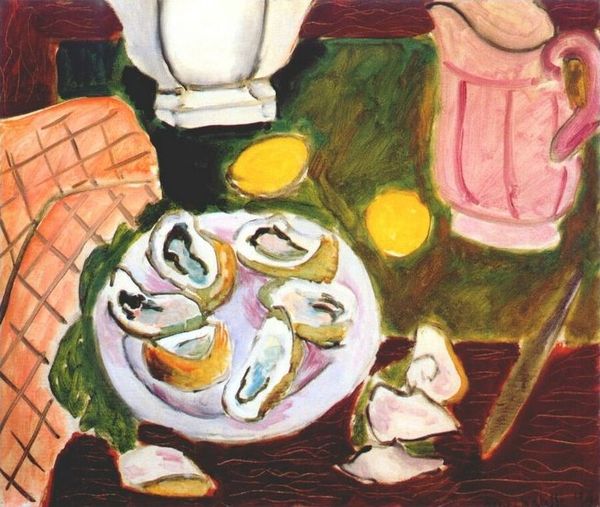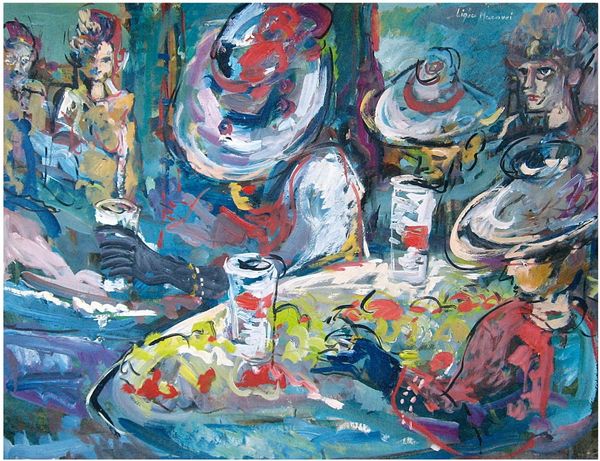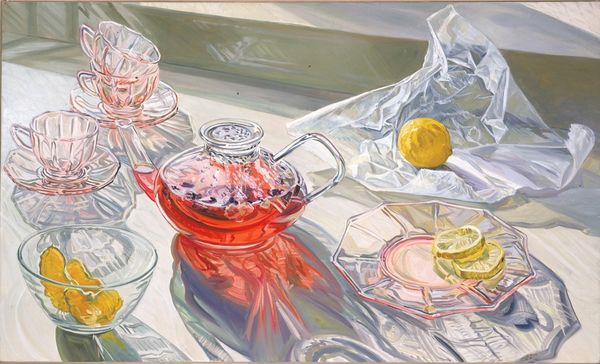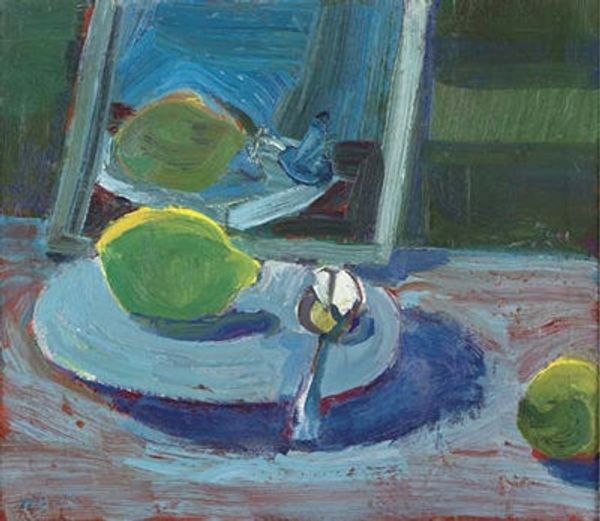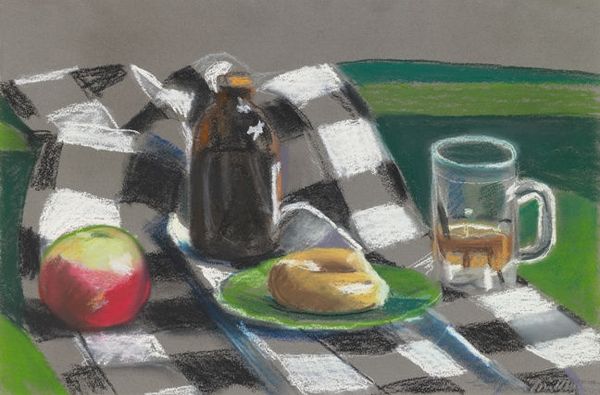
Copyright: Max Gubler,Fair Use
Curator: Let’s take a moment to observe Max Gubler’s "Still Life with Thistle in Blue Vase, Salt Pot, Basket of Apples and Mask" from 1956. It's an oil painting, demonstrating a vibrant application of impasto. What are your initial impressions? Editor: The colors grab you first. It feels almost jarring—that electric blue vase against the muted grays, then the almost sickly pinks of the fruit. The whole composition teeters between familiar still life and something more unsettling. Curator: Absolutely. Gubler's work, deeply rooted in German Expressionism and Modernism, presents this familiar subject matter with layers of symbolism if we consider Gubler’s experience under Nazi Germany. These elements—apples, flowers, and even the mask—speak to themes of concealment, forced optimism and, arguably, survival. What stories do you think are being told by each element here? Editor: Well, shifting our view for a moment to formal composition, observe how the textures interact. Thick daubs of paint define the objects, but it's almost as if the paint itself has a life independent of the subjects being rendered. The painting operates almost on a symbolic register—where the materiality, the "paintiness" of the piece signifies and carries meaning. The colors add emphasis to this dynamic as well. Curator: I think that's a very helpful approach here because Gubler spent time committed to psychiatric institutions due to depression and periods of psychosis, adding another layer to that emotional and visual dynamic that you mention. Knowing this, those juxtapositions take on a more somber resonance and begin a conversation with modern conceptions of isolation and freedom, where, again, his still life setting becomes secondary to the symbolism it projects. Editor: So, is the arrangement on the tabletop merely a formal concern or is there an element of a personal struggle we see conveyed formally through the composition and surface handling? The rough edges and unconventional perspective only increase the tension. Curator: I think it's a constant conversation. Looking at it, one is left with questions. Can we separate his artistic expression from the tumultuous backdrop of the socio-political context and Gubler’s biography? I think his art operates precisely within these in-betweens and pushes our own positionality to interpret them in ways that are at once beautiful and jarring, hopeful, but despairing. Editor: The painting, when closely observed, invites you to decode Gubler's symbolic approach in this modern artwork through its unusual visual choices and tactile surfaces. Thank you for adding this vital contextual understanding.
Comments
No comments
Be the first to comment and join the conversation on the ultimate creative platform.
